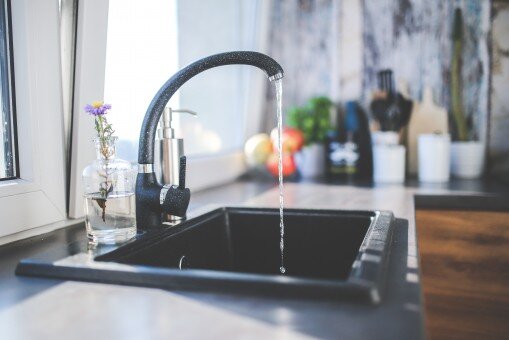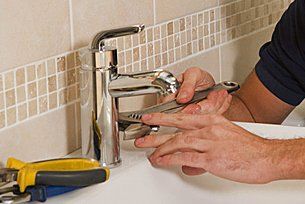Upcoming Developments and Breakthroughs in Plumbing: What Lies Ahead
Click HereWhat are your ideas about The Future Of Plumbing: Trends And Technologies To Watch?

Intro
The plumbing industry is undergoing a transformative phase driven by technical innovations and growing concerns for sustainability and efficiency. This article explores arising fads and advancements shaping the future of pipes.
Smart Plumbing Equipments
Incorporating clever innovation into pipes systems makes it possible for remote tracking, leak detection, and automated maintenance. Smart sensing units and IoT (Internet of Points) devices permit home owners and plumbing technicians to keep track of water use and discover concerns in real-time, resulting in much more effective source monitoring and proactive upkeep.
Water Effectiveness Solutions
With boosting focus on water preservation, innovative services are being created to lessen water wastefulness in pipes systems. High-efficiency components, greywater recycling systems, and wise watering controllers are among the innovations helping consumers decrease their water footprint while maintaining convenience and convenience.
Sustainable Materials
The shift towards sustainability includes plumbing products, with a growing choice for green choices. Biodegradable piping products, such as PEX (cross-linked polyethylene) and HDPE (high-density polyethylene), deal longevity and resistance to corrosion without jeopardizing environmental honesty.
Anticipating Upkeep
Anticipating upkeep strategies utilize data analytics and artificial intelligence formulas to prepare for and prevent plumbing concerns before they occur. By analyzing historic data and performance metrics, predictive upkeep formulas can identify patterns and abnormalities, making it possible for aggressive interventions to stay clear of pricey fixings and disturbances.
Enhanced Fact in Pipes
Augmented Truth (AR) modern technology is reinventing plumbing by providing technicians with real-time visual advice for troubleshooting and fixing tasks. AR-enabled wise glasses or mobile applications overlay electronic information onto the physical atmosphere, assisting plumbing technicians picture pipe layouts, identify concealed leakages, and perform fixings with accuracy.
Effect of 3D Printing
The development of 3D printing has introduced brand-new opportunities in making plumbing elements. From custom-designed fixtures to complex pipe fittings, 3D printing allows for rapid prototyping and on-demand production, minimizing preparations and enabling higher modification in plumbing design.
Health and Safety Characteristics
In reaction to heightened issues for health and wellness, pipes components are incorporating functions such as antimicrobial surface areas, touchless operation, and self-cleaning systems. These innovations not only enhance health however additionally advertise customer convenience and comfort.
Hygiene-focused Fixtures
Touchless faucets, self-sanitizing toilets, and antimicrobial surface areas are ending up being progressively common in household and commercial settings, minimizing the danger of bacterium transmission and advertising a cleaner, much healthier atmosphere.
Water High Quality Tracking
Improvements in water quality tracking modern technologies enable home owners to check the pureness and safety and security of their water in real-time. Smart water top quality sensors can identify contaminants, pH levels, and temperature variants, encouraging users to take proactive steps to ensure water safety and security.
Remote Pipes Solutions
Remote diagnostics and virtual help are changing the method plumbing services are supplied. Through video conferencing and remote gain access to innovations, plumbing technicians can fix concerns, give assistance for DIY repair services, and also execute remote inspections, offering higher availability and ease to property owners.
Obstacles and Opportunities
While pipes innovations hold enormous assurance, they also existing difficulties such as data personal privacy problems, regulatory compliance, and the requirement for workforce training. Dealing with these difficulties calls for partnership between sector stakeholders and governing bodies to ensure secure and responsible implementation of new technologies.
Regulative Landscape
Governing frameworks play an important role fit the adoption of pipes innovations, with standards and codes controling whatever from water efficiency to product safety and security. As innovations continue to develop, regulative bodies have to adapt to make sure customer defense and ecological stewardship.
Future Expectation
The future of pipes is characterized by continued development and combination with other industries such as IoT, renewable resource, and structure automation. By embracing lasting methods, leveraging emerging innovations, and prioritizing user-centric layout, the pipes industry is poised to resolve the developing needs of culture while decreasing its environmental footprint.
Conclusion
To conclude, the future of pipes is defined by a convergence of modern technology, sustainability, and user-centric style. By welcoming wise options, sustainable materials, and aggressive maintenance practices, the pipes industry can improve performance, advertise safety, and contribute to a much more lasting future.
Plumbing Industry Trends You Need To Know
Smart technology in plumbing
Homeowners want to be able to manage their homes from their phones. The technology exists to make that happen. From smart toilets to leak detector devices, the whole plumbing system can be managed on an interconnected network made up of sensors, IoT devices, and machine learning algorithms.
This allows for wireless control to turn appliances on and off, automate routines, and access advanced monitoring to track water usage and flag potential issues. Smart technology streamlines water consumption, maintenance and energy usage, creating a more efficient system.
Green plumbing
The data analysis possible with smart technology not only improves convenience and cost-effectiveness but also fulfills a high-priority customer desire – sustainability. Consumers are very aware of their impact on the planet and want plumbing solutions to reduce damage and support sustainability. Eco-friendly plumbing solutions are already starting to emerge.
Customers can opt for low-flow toilets, water-saving faucets, and connections to sustainable energy sources. Beyond monitoring water consumption, customers can conserve water through the installation of greywater systems. This is a system that collects water that has been used but is still clean enough for some household uses such as toilet flushing.
Shorter product pipeline
To keep up with modern plumbing, plumbers need modern tools that enable them to complete jobs more efficiently. One technology making strides in this area is 3D printing. By 3D printing key plumbing fixtures, plumbers can reduce wait times even for specialized fixtures. It minimizes delays often seen in traditional manufacturing that frustrate customers and prevent plumbers from taking on more work.
Off-site repairs
Augmented reality is making a splash in many industries including plumbing. Plumbers can map a building online so they can explore the plumbing system through augmented reality, identifying areas of maintenance and repair completely digitally. This technology can be applied quite widely in plumbers’ work including planning installations and training new recruits. It’s safer, smarter and more efficient.
Low-footprint materials
Another way for plumbing companies to reduce their environmental footprint and meet the customer demand for sustainability is by using recycled materials in their work. The products they source and manufacture such as pipes, fixtures and faucets can be made from recycled materials. This saves the planet while being just as effective.
Onsite water purification
Additionally, plumbing companies can be advocates of water conservation and ease the financial and environmental concerns of customers by offering water purification systems. New water purification technology such as reverse osmosis systems and UV systems make it possible for homeowners and business owners to thoroughly cleanse water, removing contaminants onsite. This means the water can be safely reused in more ways than greywater can be, establishing a water recycling loop.
Tankless water heaters
Another innovation of modern plumbing is tankless water heaters. The idea is that the water is heated on demand as it runs through the system instead of being heated in a water tank. This is more energy efficient and therefore cost-effective and eco-friendly because water isn’t heated needlessly.

We had been shown that write-up about The Future Of Plumbing: Trends And Technologies To Watch from a friend on our other web page. I beg you take the opportunity to share this blog post if you enjoyed reading it. Many thanks for taking the time to read it.
Click Here